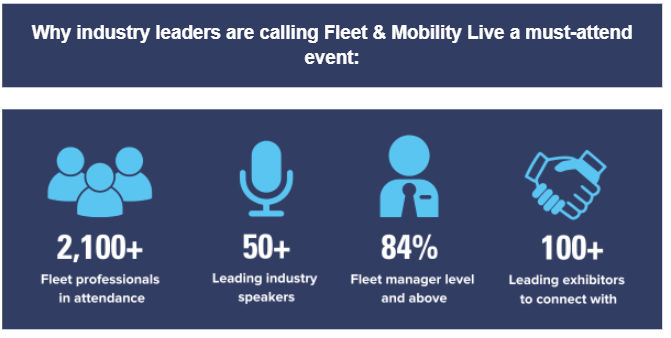This feature originally appeared in the April edition of Fleet News. Read the article in full
Just like Rocky Balboa in Sylvester Stallone’s 1977 Oscar-winning film, company cars have been taking a beating, with punch after punch being landed on the benefit.
These include ever-increasing tax bills for both employer and employee, the introduction of the WLTP emissions test which affected both CO2 emissions and vehicle availability, uncertainty over future benefit-in-kind bands, and more attractive PCP deals on new cars for retail buyers.
However, while Rocky was able to summon inner reserves of strength to make his comeback, the return of the company car is being driven by a new-found certainty over emissions and BIK rates – with new bands making electric and plug-in hybrid vehicles particularly attractive.
Here we look at the state of the market and what the next few years could have in store.
What have the trends been?
Latest HMRC figures – released in June last year – showed the number of company car drivers in 2017/2018 was 890,000, a 5.3% fall on the previous 12 months.
Six months before that, Lex Autolease had suggested the number of company car taxpayers could fall to 832,000 by April this year as a result of the optional remuneration arrangement (OpRA) tax changes and the introduction of the WLTP emissions regime.
Chris Chandler, principal consultant at Lex Autolease, this month told Fleet News: “In recent years, we’ve seen a significant increase in the number of non-essential users looking outside of company car provision.
“This has typically been to avoid company car tax and have more choice – as there are fewer cost penalties in the private market for drivers of high-emission vehicles.”
Analysis by KPMG has found that the BIK tax a company car driver has faced has risen by more than three-quarters in the past six years.
“If we look at a Volkswagen Golf diesel with a list price of £30,000 and CO2 emissions of 110g/km, a 40% taxpayer would have been paying just over £2,000 in tax six years ago, compared to £3,600 in 2019/2020,” says David Raistrick, senior manager at KPMG in the UK.
“This equates to a 76.5% increase, which is way over and above inflation.”
Providing the cash allowance can also be cheaper for the employer, he adds.
“If you look at the cost to the business of providing that car, incorporating the lease cost, maintenance cost, road fund licence,
insurance, Class 1A NIC, it costs about £7,000 a year to provide that car.”
Many companies have also forced the hand of their employees by closing their car schemes and enforcing policies to ensure drivers take the cash route, says Christopher Caddick, head of business development at JCT600 Vehicle Leasing Solutions.
“This decision is often influenced by the fact that it was the most cost-effective
solution for decision-makers themselves,” he adds.
“However, just as the company car may not be the answer for them, cash certainly isn’t right for all employees.”
What has changed?
Fundamentally, recent developments have seen organisations and drivers receive certainty over the tax implications of
operating company cars for the next five years.
The WLTP testing regime became fully operational on April 1, while in the Budget last month the Government confirmed the BIK tax bands up to and including the 2024/25 tax year.
“The fact rates are now known for the next five financial years – a full replacement cycle for vehicles – gives planning confidence to both fleet decision-makers and company car drivers,” says Caroline Sandall, co-chair of the Association of Fleet Professionals.
The tax bands also heavily incentivise the
adoption of electric cars, with drivers of battery electric vehicles not having to pay any BIK in 2020/21.
A survey of 2,000 business employees by leasing company DriveElectric found, following this
decision, that eight out of 10 respondents who currently opt out of a company car scheme are ‘likely’ or ‘very likely’ to move back into company cars, with those vehicles being electric.
Other leasing companies, including Lex Autolease, Arval UK and JCT600 VLS, have already experienced this transition. “We’re seeing employees who once opted for cash look to opt back into schemes where EVs are available and a resurgence of salary sacrifice for cars, especially at the management and senior management level,” says Caddick.
“Where the predictability of people’s journeys will allow, we should also see more progress in the roll out of EVs to job-need fleets as the range of the more affordable EVs increases.
“This is a population where the use of AMAPs and cash could currently deliver savings and potentially increase the take up of cash.
“However, the ability to move these employees into EVs will make a significant difference in converting significant mileage to electric delivering a real reduction in emissions and a fantastic savings to both parties.”
Shaun Sadlier, head of consultancy at Arval UK, adds: “More broadly, we are also starting to
see plenty of examples of drivers opting back into company car schemes now as a result of
the certainty around tax and expect that trend to continue.”
Making the case for company cars to employees
For many employees, the chance to opt for a cash allowance to buy a car they want, free from any CO2 or brand restrictions imposed by a company car choice list, has been too tempting to resist, particularly in the light of rising BIK bills.
Many of these drivers are signing up to attractive-looking PCP or PCH finance offers offered by manufacturers.
However, the saying ‘if it looks too good to be true, it probably is’ is relevant here, with PCP deals typically limiting annual mileage to 10,000 with a charge of 3p to 9p per mile over this, meaning the driver could end up with large, unexpected bills at the end of the contract.
Employees who opt for cash also find themselves responsible for arranging associated services such as insurance and maintenance.
“Many who liked the idea of cash three to four years ago are opting back in because the reality of being responsible for the cost and ongoing hassle of running a vehicle, without the support of their employer and suppliers, was not worth the originally assumed benefits,” says Caddick.
Simon Staton, director, client management for Venson Automotive Solutions, says that essentially having a company car reduces an employee’s burden of worry.
“They are not tied to a personal financial contract. All repair, maintenance, servicing
and insurance costs are usually covered by the employer and they do not have to worry about depreciation costs as they never own the vehicle,” he adds.
Money also talks, of course, and the new BIK rates mean the case for the company car becomes even stronger if the employee is able to choose a PHEV or BEV.
For example, in 2019/20, the annual BIK cost to a 20% taxpayer for a Kia E-Niro was £1,214, but this falls to zero in 2020/21, £76 the following year and then £152 for the next three tax years up to and including 2024/25.
The tax savings obviously become greater the higher the P11D price of the car, as well as the income tax bracket of the employee.
“If you drive a BMW 320d and switch to a Tesla Model 3, how much BIK will you save a year? It’s £4,500 take home,” says Simon King, director of sustainability, social value and fleet at Mitie.
“So if I take away your BMW 3 Series and give you a Tesla instead, that’s the same as giving you an £8,000 pay rise, assuming you are a 40% taxpayer. What’s not to like about that?”
Sadlier adds: “There may never have been a time, certainly within corporate memory, when the company car has been such an attractive proposition.
“If employees opt for the right vehicle, it’s potentially free. All they have to do is fuel or charge and wash it.
“For the vast majority of people, the choice is quite simple.”
At a glance: the top benefits of taking a car instead of a cash allowance
- A driver is not personally tied into a financial contract
- Insurance, servicing or maintenance worries are usually covered by the employer
- There are no depreciation costs for the driver as they never own the vehicle
- For plug-in vehicle drivers, the benefit-in-kind is generally lower than compared to the cost of buying and running their own vehicle
- No need to worry about reselling the car at a later date
Source: Venson
Making the case for company cars to employers
While company car drivers who operate BEVs or PHEVs will be the biggest winners under the new BIK tax regime, organisations which add EVs to their fleets will also make tax savings.
The Class 1A national insurance contributions (NICs) for company cars is calculated using the BIK tax band; organisations will pay no Class 1A NIC on pure electric vehicles in 2020/21.
Using the same Kia E-Niro as in the employee example, companies paid Class 1A NIC of £838 in 2019/2020. In 2020/21 this will be zero, 2021/22 £52, and then £105 for the next three tax years up to and including 2024/35.
There is also the potential to make significant savings through reduced fuel and SMR bills (see Save money and the planet: Making the case for EVs, Fleet News, January 2020).
“The fleet industry is leading the transition to a zero emission future, so providing electric company cars will help businesses to achieve their sustainability objectives – in turn driving the UK towards its 2050 net-zero target,” says Chandler. “We also know from our recent research into electric vehicles, almost half of consumers look favourably on businesses with electric or low-emission fleets.
“Opting for low emission vehicles can result in lower costs for the business in comparison to cash allowances – a compelling point for fleet managers making their case to the board.”
All company cars, regardless of powertrain, share the same benefits to an employer, including meeting duty of care responsibilities and mitigation of risk, cost and control of cost and employee recruitment and retention.
“A business that requires staff to be out on the road has a duty of care to ensure the vehicle is roadworthy, taxed and insured,” says Staton. “By encouraging employees to take a company car, fleet managers know the vehicle being driven is regularly serviced and maintained, ensuring the company is compliant with its corporate social responsibilities.”
Industry evidence also suggests that employees’ own cars have significantly higher CO2 emissions than company cars, he adds.
“Businesses should be clear that while company car schemes may sometimes seem onerous, taking a risk by having a large grey fleet may prove to be an even bigger cost, as well as a health and safety administration headache,” says Staton.
A company car scheme can also help businesses attract the best candidates or help existing staff to stay.
“It is a great incentive and a way of making them feel rewarded and valued – which can lead to higher productivity and loyalty,” he adds.
At a glance: benefits of providing a car instead of a cash allowance
- Meet duty of care responsibilities by knowing vehicle is roadworthy and taxed
- Can help meet sustainability
- objectives by lowering vehicle CO2
- Company cars help staff recruitment and retention
- Can result in lower costs than cash allowances if EVs are adopted
- Help ensure strong brand image
























Login to comment
Comments
No comments have been made yet.